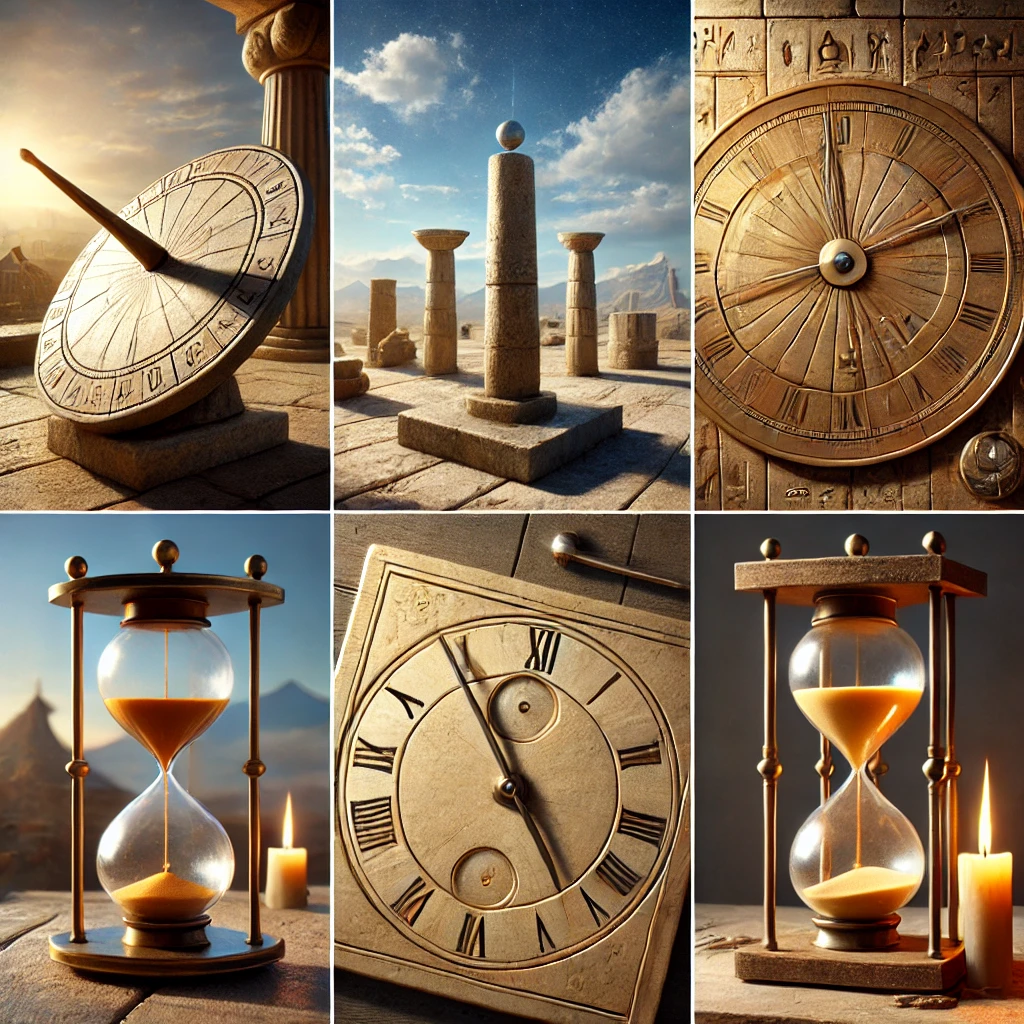Exploring Sundials, Water Clocks, Candle Clocks, and Hourglasses—Timeless Inventions That Measured Time Before Modern Clocks
What’s the story behind the numbers displayed on a digital watch?
Throughout history, people have always been curious about time—how to measure it, how to track it, communicate it, and how to make the most of it. Long before smartphones and wristwatches, our ancestors used ingenious methods to mark the passage of time, even when there was no sun in the sky or precise way to count minutes and hours. Let’s dive into the fascinating world of early timekeepers, where sundials, water clocks, candle clocks, and hourglasses ruled the day (and night!). Along the way, we’ll explore how these methods set the stage for the 12-hour and 24-hour clocks and our modern timekeeping technology.
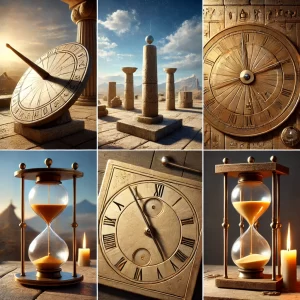
Sundials: Telling Time with Shadows
The sundial is perhaps the oldest way to measure time, relying on sunlight and shadows to show the hour. Picture a stick or pole planted firmly in the ground. As the sun moves across the sky, the stick casts a shadow that slowly travels around it, like the hand on a clock. Each position of the shadow represents a different hour of the day. Ancient Egyptians, Greeks, and Romans used sundials to keep track of time during daylight hours, adjusting their schedules as the shadow moved.
But sundials had one limitation—they only worked when the sun was out. Once evening fell or clouds covered the sky, the sundial “took a break” until the next sunny day. This limitation may seem surprising to modern children, who learn to read clocks without any understanding of “shadow timing.” They may wonder why our day is divided into 12 hours or why some clocks use 24 hours. For ancient people, shadows naturally divided the day into two halves: morning and afternoon, which led to the 12-hour clock.
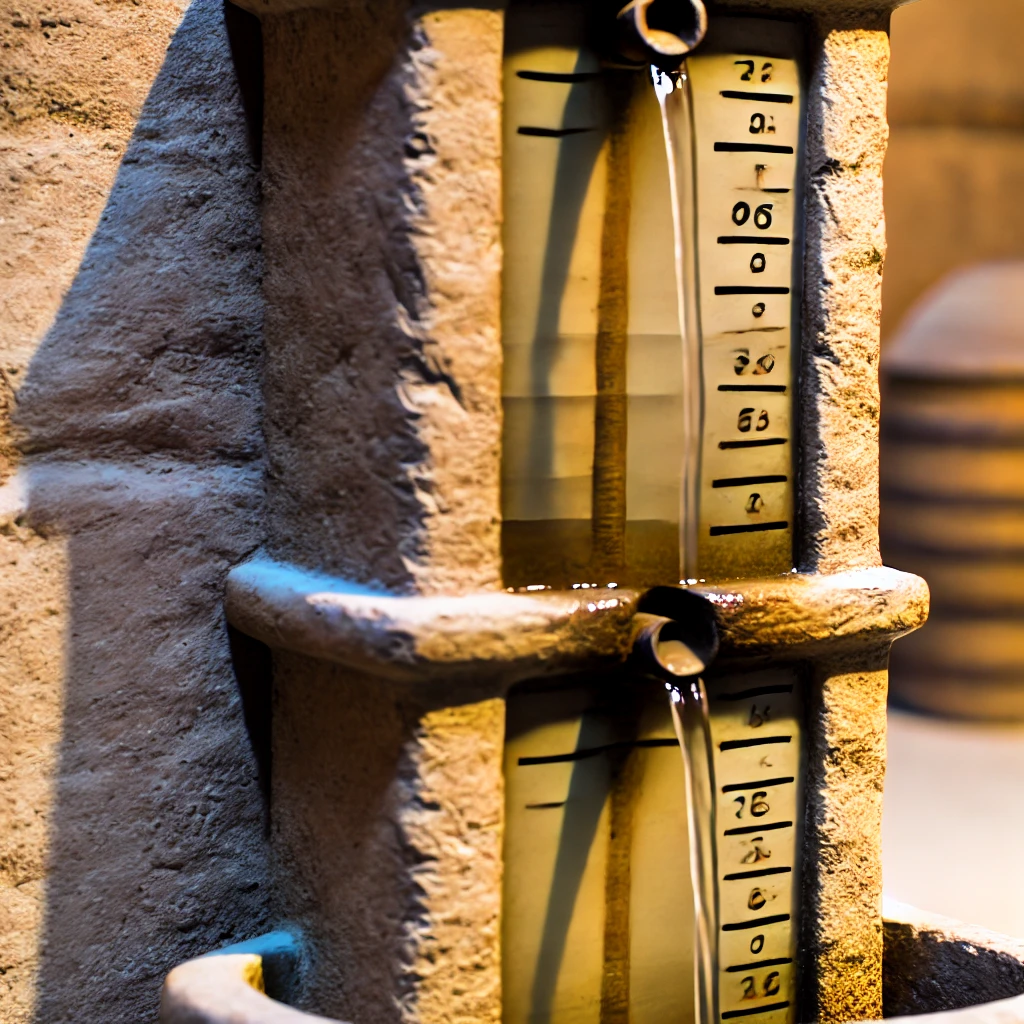
Water Clocks: Counting Time Drop by Drop
Enter the water clock, a timekeeping device that flowed smoothly both day and night. Known as a “clepsydra,” the water clock worked by controlling the flow of water between two containers. In one version, water dripped slowly out of a container at a steady pace, marking the passage of time as the water level dropped. Another design had water flowing into a container, with each level marking a different time.
Water clocks were used in places as ancient as Babylon, Egypt, and China, helping people keep time for ceremonies, meetings, and public events. Though not perfectly accurate (as temperature could change the flow rate), they provided a steady alternative to the sun-dependent sundial.

Candle Clocks: Time by Firelight
When water clocks weren’t practical, candle clocks stepped in. This clever invention relied on the steady burning of a candle, which was marked with lines to indicate hours. As the candle burned down, it reached each line, marking another hour passed. Some candles even had metal pins at each hour mark; as the wax melted to a pin, it would drop and make a “ding” sound, giving an audio signal as well as a visual one.
Candle clocks were especially handy in monasteries, where monks used them to keep track of prayer times at night. They also served as practical night-time timers in households for cooking, reading, or timing tasks after dark.
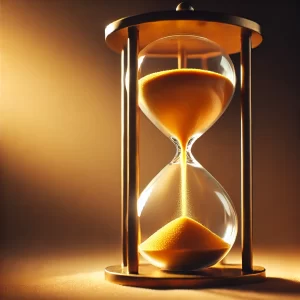
Hourglasses: Turning Time with Sand
The hourglass, or sand timer, is one of the most iconic early timekeepers. Two glass chambers, one above the other, are connected by a tiny neck that allows sand to flow from the top chamber to the bottom at a constant rate. Once the top chamber is empty, the hourglass is flipped over, starting the process again. Different hourglasses measured different periods—some just a few minutes, others an hour or more.
The hourglass was especially popular on ships, where its steady flow of sand wasn’t affected by waves or movement. Sailors used it to time their navigation calculations, watch shifts, and even cooking tasks. Beyond its practical use, the hourglass became a powerful symbol of the passing of time, reminding people of life’s fleeting moments.
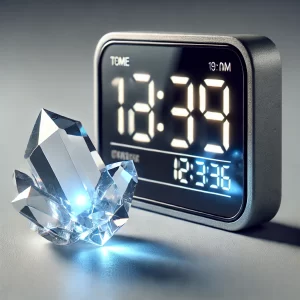
Springs and Crystals: The Birth of Modern Timekeeping
As science and technology advanced, people needed clocks that were more accurate and that didn’t rely on natural elements like water, fire, or sand. This led to two breakthroughs: springs and crystals.
- Mechanical Clocks with Springs: The invention of spring-powered clocks in the 17th century allowed for accurate, portable clocks. Instead of relying on shadows or water, these clocks used tightly wound springs that slowly unwound to keep time, driving tiny gears and hands on the clock face. This made it possible for people to carry time with them, revolutionizing daily life and helping spread the 12-hour and 24-hour systems.
- Quartz Crystals: In the 20th century, the discovery of quartz crystal timekeeping took accuracy to a new level. Quartz crystals vibrate at an exact frequency when electricity passes through them, creating a precise “tick” that modern digital clocks use. This technology allowed clocks to be even more accurate and made watches and clocks affordable for everyone.
The Legacy of Early Timekeepers
Though these ancient timekeeping methods are rarely used today, they’ve left a lasting mark on our understanding of time. Each one—whether it’s the shadow of a sundial, the drip of a water clock, the burn of a candle, or the fall of sand in an hourglass—showed humans the beauty of measuring and respecting time. These inventions reveal how creativity, observation, and simple tools allowed us to keep track of time long before modern technology.
For children growing up today, who may only know digital clocks, the ancient methods may seem unfamiliar. The concepts of shadow timing or watching sand fall might seem strange. Yet, these early tools laid the groundwork for how we still think about time, whether in 12-hour or 24-hour systems.
Next time you check the time on a digital screen, remember the cleverness of our ancestors. They used sunlight, water, fire, and sand to measure the hours—always finding a way to keep track of each precious moment, long before springs and crystals took over.
